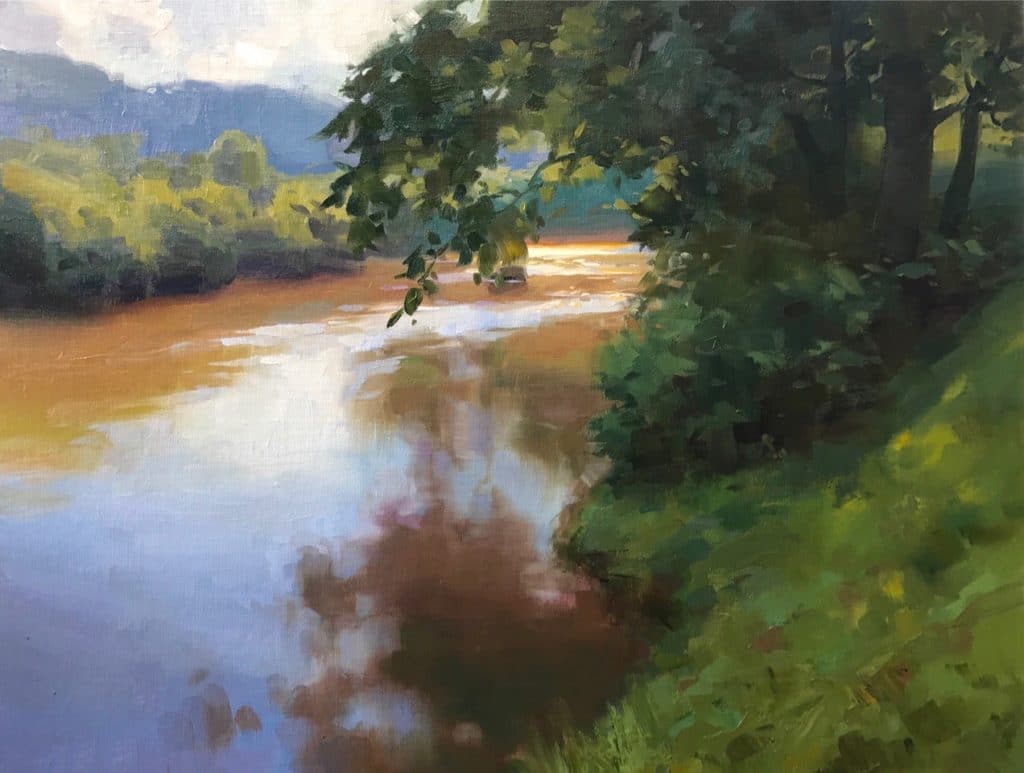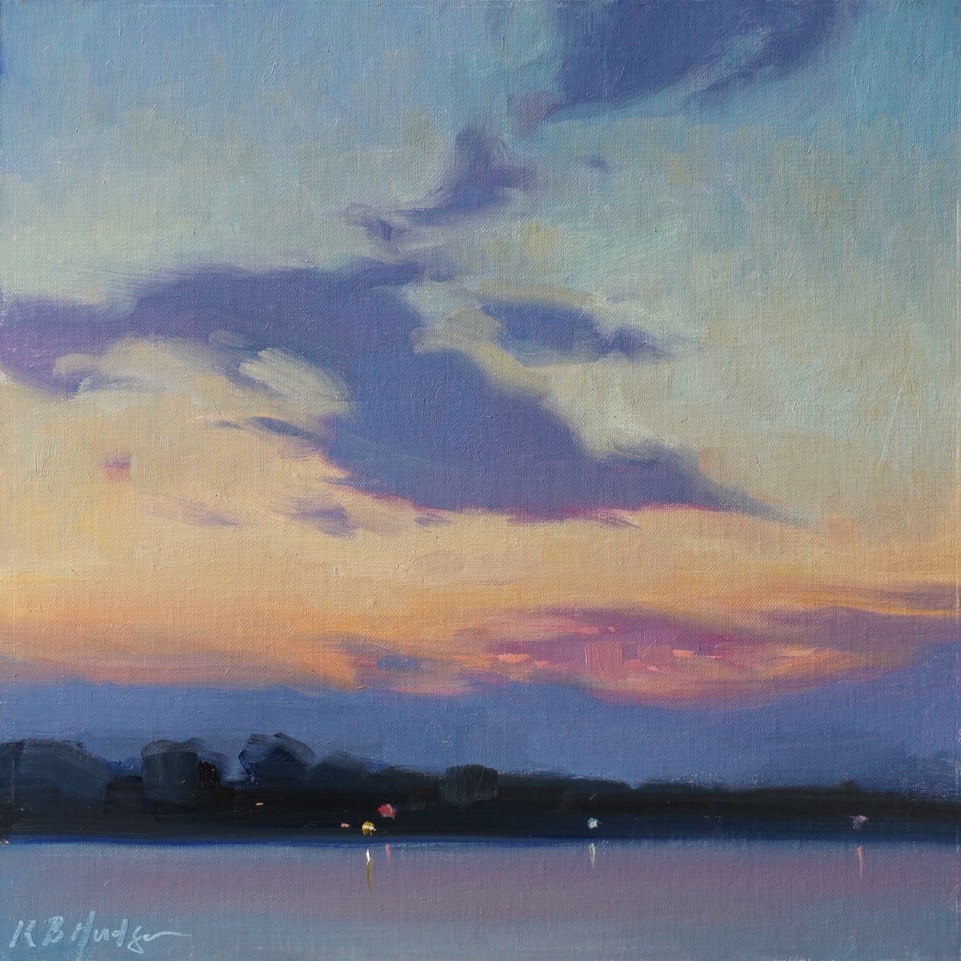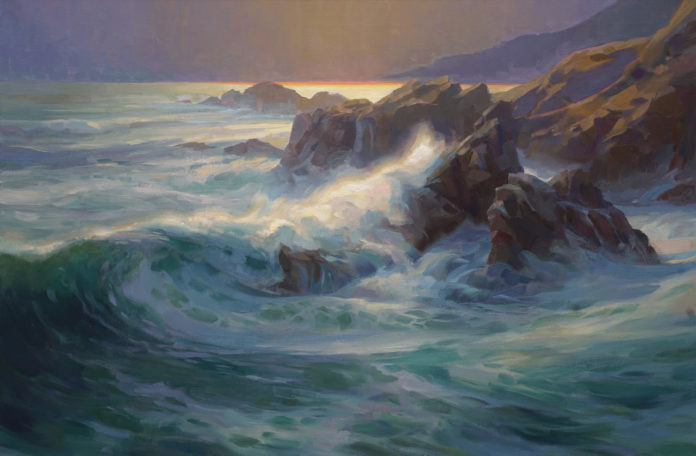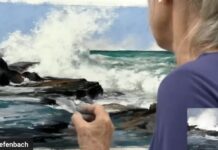When painting landscapes en plein air, you’re painting movement. The air moves, the light changes; it’s never static. Read more >>>
By Kathleen B. Hudson
Kathleen is featured in the art video Creating Dramatic Atmosphere in Landscapes, and is an instructor for the Plein Air Convention and Expo.
The key to capturing dramatic atmosphere when painting landscapes en plein air is to remember that you’re not painting objects in the landscape — you’re painting the air between you and the subject of your composition. In the coming months, I’ll share a series of articles on painting landscapes with a powerful sense of atmosphere. Here’s the first installment.
Ultimately, when you paint a landscape, you’re painting movement. The air moves, the light changes; it’s never static. Light and atmospheric forces act upon the components of the landscape to create a story, and it’s up to you as the artist to pick the story you want to tell.
Painting Landscapes: Tell a Story
When deciding what story to tell about a landscape, try to start with a series of questions.
• What strikes you most about this landscape? What mood does it evoke?
• What will be the main idea of your painting? What is the focal point?
• Where are the highest contrasts and sharpest edges? (This will often align with the focal point.)
• Is there a dominant color temperature in the landscape?
• What are the dominant atmospheric effects? How are they acting upon the elements of the landscape?
The answers can help you determine what to emphasize in the piece. I often write them down and revisit them regularly while painting so my vision retains its clarity. Reflecting on these questions at the beginning of a painting also affords me a chance to visualize what I want my finished painting to look like.

When looking at my subject, I try to see the landscape before me with an artistic eye–not labeling or categorizing objects (trees, rocks, structures, etc.), but squinting to see shapes of light and shadow, hard and soft edges, grays and higher chroma. This becomes more habitual over time, but at a point in almost every painting I still find myself fighting the urge to delineate exactly where one element ends and another begins. Edges in nature are rarely stark, so it can look a bit cartoonish when you compartmentalize different components of the landscape or rely too heavily on an element’s local color.
Instead, paint what you see.

One of the best things you can do to improve your landscape paintings is give yourself the time and space to observe atmospheric movement closely. Go outside and take notes, sketch, do studies, or just take it in. If you can, travel. Different regions have markedly different weather patterns and light quality, so you may find being in an unfamiliar place gives you fresh eyes. After all, the work of improving your painting is more truly a matter of renewing your vision.
Next month, we’ll look at the ways atmospheric perspective gives a landscape depth and feeling — and I’ll break down the visual tools you can use to convey atmosphere in your paintings.
About the author: Kathleen B. Hudson is a nationally recognized artist from Lexington, KY and has been a faculty member at PACE. Recently, Streamline Art Video released her instructional DVD, Creating Dramatic Atmosphere in Landscapes (watch a preview below!).
Would you like to learn how to paint incredible landscape scenes like a professional … in a fraction of the time it normally takes?
If your answer is yes, then “Creating Dramatic Atmosphere in Landscapes” was made for you!
And browse more free articles here at OutdoorPainter.com




